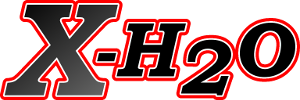Simply put get a note pad , slowly turn in your high and low adjusters and carefully count the number of turns, lets say for instance you are at 3/4 of a turn out now, write that down on the note pad or you can write it inside the hood of the ski with a sharpie, now you have your baseline settings that you can always go back to.
Once you have the adjusters returned to the baseline settings, then you can start playing with the settings , as long as you are turning the screws out , its pretty hard to mess anything up as you are adding fuel to the mixture and you can always go back to the stock settings.
In your case I would start with the low speed screw, turn it out 1 full turn from where it is now, see how it cranks and runs at that setting , most stock Yamaha skis are set way too lean on the pilot screw , sometimes you can come out a turn to a turn and 1/2 from the stock settings on the low speed screw and fix the starting issue plus it will pull better off the bottom , just realize when you do this that it will also affect the idle and you may have to turn the idle adjuster in as well to get the idle correct.
How far you can turn it out depends on where it is set at now, lets go back say we are at 3/4 turn on the low speed screw, one turn out is 1 3/4 , a turn and a half is 2 1/4 , regardless you never go past three turns or the adjuster will fall out while you are riding the ski.
The basic rule of thumb is that if you need to go more than 1 turn out from the stock settings you need to put in a bigger jet size. This applies to both pilot and high speed screws. This pilot or low speed adjustment does have some impact on the high speed adjuster setting but it is minimal, at most you might want to go 1/8 to 1/4 turn in on the high speed after you get the low speed set, most times I leave the high speed adjuster alone and it runs fine.
On the jet sizes this can be confusing but lets keep it really simple , lets say you have a 70 pilot jet and you can get it to run and start well at 2 turns out, you can leave it there or you can go up one size on the pilot jet to a 75 pilot and readjust the low speed screw.
Of course with the bigger pilot it will be too rich at 2 turns out so you have to lean it out, you do this in 1/4 turn increments, turn it in 1/4 see how it cranks and takes off, go another 1/4 turn, when you get to the point where it bogs taking off you have gone too far, back it out a 1/4 turn and retest it.
There are other funky jet sizes in between 70 and 75 like a 72.5 , leave those alone, they are half sizes and you don't need to be that precise, thats what the adjusters are there for.
I have seen numerous skis that came in and were hard to start even with the choke on go from nearly running the battery down to start the ski to cranking before you could get your finger off the start button without using the choke just by doing this small amount of tuning on the carbs.

